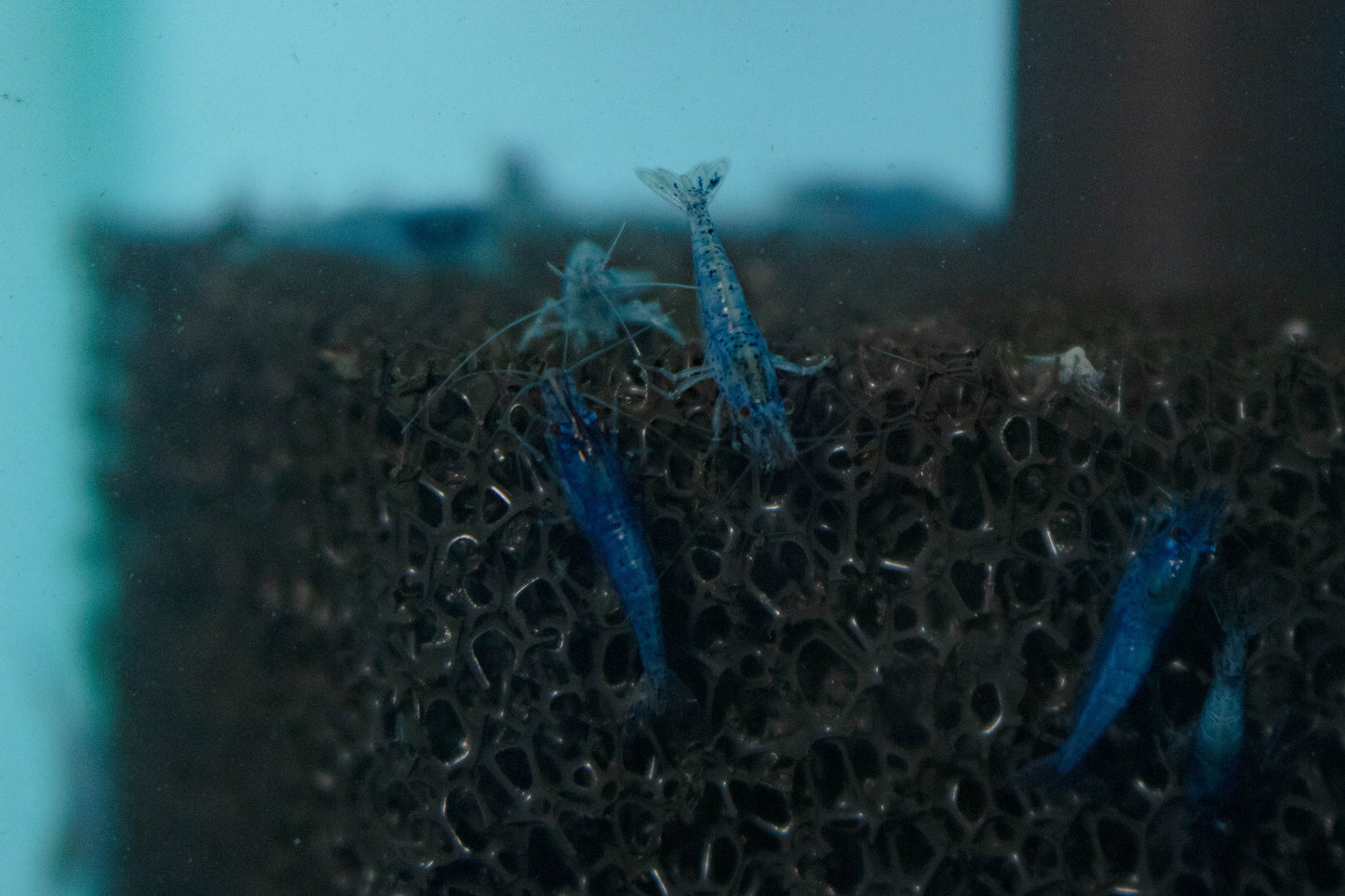Arctic Blue Amano
Arctic Blue Amano
Regular price
£3.95 GBP
Regular price
Sale price
£3.95 GBP
Unit price
per
Tax included.
Couldn't load pickup availability
The Blue Amano Shrimp is a popular freshwater shrimp species that is native to Japan. They are typically a blue-gray color and have a distinctive stripe pattern on their backs. These shrimp are relatively easy to care for and can be a great addition to a planted aquarium.
Blue Amano Shrimp typically grow to be around 3-4 centimeters in length and prefer a water temperature between 20-27 degrees Celsius. They are social creatures and do best in groups, so it's recommended to keep at least six in a tank.
These shrimp are omnivores and will eat a variety of foods, including algae, detritus, and commercial shrimp pellets. It's important to provide a balanced diet for them to maintain their health and vitality.
In addition to being great cleaners for your aquarium, Blue Amano Shrimp are also peaceful and non-aggressive, making them great tankmates for other community fish. They are also known to be good breeders, so you may find yourself with a growing population over time. Shrimp is a popular freshwater shrimp species that is native to Japan. They are typically a blue-gray color and have a distinctive stripe pattern on their backs. These shrimp are relatively easy to care for and can be a great addition to a planted aquarium.
Blue Amano Shrimp typically grow to be around 3-4 centimeters in length and prefer a water temperature between 20-27 degrees Celsius. They are social creatures and do best in groups, so it's recommended to keep at least six in a tank.
These shrimp are omnivores and will eat a variety of foods, including algae, detritus, and commercial shrimp pellets. It's important to provide a balanced diet for them to maintain their health and vitality.
In addition to being great cleaners for your aquarium, Blue Amano Shrimp are also peaceful and non-aggressive, making them great tankmates for other community fish. They are also known to be good breeders, so you may find yourself with a growing population over time.
View full details
Blue Amano Shrimp typically grow to be around 3-4 centimeters in length and prefer a water temperature between 20-27 degrees Celsius. They are social creatures and do best in groups, so it's recommended to keep at least six in a tank.
These shrimp are omnivores and will eat a variety of foods, including algae, detritus, and commercial shrimp pellets. It's important to provide a balanced diet for them to maintain their health and vitality.
In addition to being great cleaners for your aquarium, Blue Amano Shrimp are also peaceful and non-aggressive, making them great tankmates for other community fish. They are also known to be good breeders, so you may find yourself with a growing population over time. Shrimp is a popular freshwater shrimp species that is native to Japan. They are typically a blue-gray color and have a distinctive stripe pattern on their backs. These shrimp are relatively easy to care for and can be a great addition to a planted aquarium.
Blue Amano Shrimp typically grow to be around 3-4 centimeters in length and prefer a water temperature between 20-27 degrees Celsius. They are social creatures and do best in groups, so it's recommended to keep at least six in a tank.
These shrimp are omnivores and will eat a variety of foods, including algae, detritus, and commercial shrimp pellets. It's important to provide a balanced diet for them to maintain their health and vitality.
In addition to being great cleaners for your aquarium, Blue Amano Shrimp are also peaceful and non-aggressive, making them great tankmates for other community fish. They are also known to be good breeders, so you may find yourself with a growing population over time.





